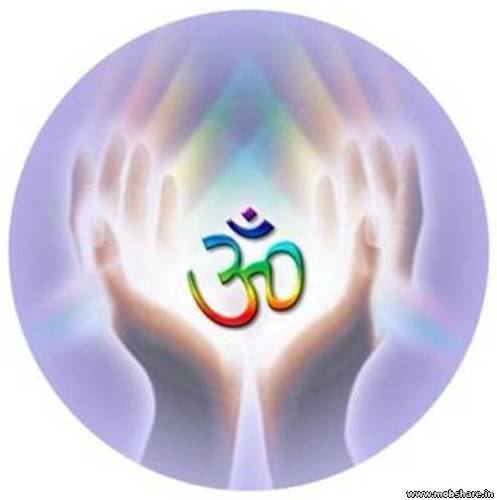Tuesday, March 22, 2011
Beginning with the so-called “Enlightenment” era in European history, the ideological doctrine of radical human egalitarianism has become the most sacrosanct dogma in the realms of both politics and culture. The fight for equality has been the foremost social-political concern globally for the past 250 years, inspiring wars, revolutions, Marxist totalitarianism, genocides, and devastating social upheaval. So central has the concept of Radical Egalitarianism been in the modern political landscape that it has often overshadowed every other political, philosophical, and social concern we can think of.
Despite three continuous centuries of forcing “Enlightenment” era notions of equality upon humanity, however, the world’s problems have only gotten infinitely worse. With more poverty, more corruption, more wars, more unethical behavior, an ever-deeper sense of meaningless in the world’s youth, and the increasingly rapid coarsening and degeneration of traditional cultures globally, many intellectuals and spiritually oriented people are today beginning to ask the inevitable question: “Has the dogma of radical egalitarianism actually outlived its usefulness?”
The answer to this question, from the perspective of Sanatana Dharma (Hinduism) is neither a yes nor a no, but rather leads us to the more philosophically sophisticated question of: “What is the nature of the human person?” For only in knowing this can we understand the true nature and meaning of equality. In the following, I will explain the Dharmic view of equality juxtaposed to the materialist-oriented Radical Egalitarianism that the world has fervently pursued for the last several centuries.
The metaphysical premises of Radical Egalitarianism are based upon an outlook of empiricist materialism that views the human individual as consisting of nothing more than merely the physical, the body. For the materialist, human beings do not have a soul, or an intrinsic essence, that transcends the material body, which is itself composed of nothing more than the combination of chemicals and material substances formed over myriad millennia via the process of evolution. The human individual, for the Radical Egalitarian, is a soulless and ultimately purposeless machine, an automaton whose only meaning lies in whatever material and economic contributions the individual can make to the greater social whole. Thus, one “living body” is just as good as any other.
Such a mechanistic view of the human individual has led not only to the notion of radical equality, but also to the consequent view that all human individuals are ultimately equally worthless. Thus we have seen the birth of the “end justifies the means” form of “ethics” that has arisen amongst the Marxists, and the consequent death and genocide that has resulted from every Communist regime the world has ever known. If all human bodies are of equal worth, then no one individual is of more importance than any other individual. Thus all are equally expendable.
A society that sees humans as soulless is a society that sees human beings as being of no more worth than machines. And machines are simply tools to be used for the benefit of the state. For the Radical Egalitarian, the human being is no more than a means to an end, an object for their own use, rather than a subject worthy of all the dignity, appreciation, and respect that a unique human person deserves.
The Dharmic view of equality and the human person is considerably more sophisticated, compassionate, and thus ethical, than the materialist egalitarian approach. For the conscious and sincere follower of Sanatana Dharma, the human person consists of infinitely more than the mere bodily surface appearance. The old adage that one cannot judge a book by its cover comes to mind when we examine the wisdom of the Dharmic approach.
Rather than simplistically attempting to reduce a human person to being merely the visible material body that one can immediately detect with the senses, Dharma teaches us that the typical human being is actually a multi-faceted and multi-dimensional being, with a material dimension, a causal dimension, and ultimately a spiritual dimension that is not always clearly visible to the untrained eye. The human person consists of a) deha (physical body), b) manas (mind substance, including impressionistic data, memory, etc.), c) buddhi (the rational faculties), d) ahamkara (false, individuating ego), and most importantly e) atman (the true, spiritual self).
According to the Dharma world-view, we certainly are beings who possess bodies – no sane person would deny this immediate empirical fact. Indeed, contrary to the unnatural and illogical conclusions that the Radical Egalitarian draws from this simple fact, from a purely physical perspective, there is actually an almost infinitely great degree of diversity and inequality that is clearly empirically seen. Physically speaking, no two people in the world are really the same. Some are tall, others short. One person is strong, another weak. Some need glasses, hearing aids, or other devices to “even out the playing field” (i.e., pretend that we are all physically equal!), other people are free from physical defects altogether. The diversity we find in physical bodies is endless. That is common sense. By extension, when looking at the minds and the intellectual capacities of various individuals, we clearly see that some are more intelligent than others. Some are more naturally artistic and creative, whereas some are more analytical and cerebral. Some people will have mental or emotional challenges, such as psychosis, bipolar disorder, or retardation, others have minds so healthy as to allow them to view reality with tremendous clarity.
Egoic desires, preferences and goals, too, are as diverse in content and quantity as are the numerous people we see around us. Some aspire to become great world leaders. Others desire wealth, or fame, or romantic love. Some people, by contrast, seem to have a profound yearning to know God, and serve their fellow beings with humility, simplicity, deep compassion, and quiet determination. We are all different from one another. Thus, we are all in so many ways unequal in our appearance, our abilities, our preferences, and our desires.
Rather than attempting to lie to ourselves and artificially fly in the face of clearly discernible empirical facts, Sanatana Dharma encourages all human beings to respect each other, honor our differences, and work together in compassion, dignity and harmony, despite our undeniable recognition of all our many differences. Sanatana Dharma (the Eternal Natural Way), thus gives us the empowerment to live in accordance with the natural order of the universe in a manner that is beneficial to all.
For Dharma, the realm of true equality lies not on the physical, mental, intellectual, or egoic planes, but in the realm of spirit. Having God as our sole source, sustainer, and ultimate destiny, we all share in the same spiritual parent. From a spiritual perspective, then, in the deepest essence of who we are as pure spiritual beings (atman), we are all equally the children of God.
Your true, spiritual self (atman) does not have color, nor dimension, nor race, nor class, nor gender. In spirit, you are neither a capitalist, nor a communist. You are neither Indian, nor Black, nor White nor Latin. Rather, your true self is the eternal, perfect, blissful spiritual center of your everyday existence: Atman.
Transcending both the bodily dimensions of life and all limited materiality, your true self finds itself currently situated in your body due only to your own free-will desires, motivations, consciousness, and actions of the past. Karma is the causal antecedent of all the diverse material bodies that we see around us. While our bodies and minds are all radically different, however, the souls of every living being are all equally held in the compassionate glance of God’s merciful and loving gaze. To God, we are all equally His children, temporarily separated from Him, but all destined to one day again be in His loving embrace.
Equality is an exceedingly important goal toward which we should all aspire. In the political realm, Dharma calls upon each of us to always be compassionate, just, and fair to all we encounter, no matter how different they may seem to us in physical appearance. The only truly pure equality that exists, however, is that equality that exists on the spiritual realm. Thus, in the transcendental eyes of the yogi, or pure sage, all living being are seen with equal vision (sama darshina).
This concept of spiritually-inspired equal vision is beautifully explained to us by Lord Sri Krishna in His famous Bhagavad Gita (Song of God). In the 18th verse of chapter 5, Lord Krishna instructs His devotee Arjuna in the following way:
Brahmane gavi hastini
Shuni caiva shvapake cha
Panditah sama-darshinah
“The humble sage, by virtue of true knowledge, sees with equal vision [sama-darshina] the learned and gentle priest, a cow, an elephant, a dog or an outcaste.”
Indeed, because the humble sage views the diverse beings around him, not as mere mechanistic bodies, but as all possessing a pure spirit soul (atman), he does not even see the difference between different species of life, what to speak of different kinds of human beings! To the sage, the soul of the cow, and the dog, and the elephant is just a worthy of dignity, respect, and spiritual equality as is the soul contained in the human being. Sama Darshina, or equal spiritual vision, is the highest form of equality toward which we can all aspire – for it sees the inherent equality that exists in the spiritual essence of all living beings. Seeing all beings as our spiritual brothers and sisters, we will then, by natural extension, offer all people our respect on the political, social, cultural, and economic realms.
The truly equal society, then, is the Dharmic society, a society comprised of citizens who aspire toward the finer and nobler spiritual aspirations of life, and who thus view the world from a spiritual perspective. That nation which will most justly serve the interests of its people is the Dharma Nation. Make yourself a truly worthy citizen of God’s Dharma Nation by spiritualizing your own vision and viewing your neighbors and fellow living beings as the atmans they truly are. Begin the Dharma Revolution in your own life!
About the Author
Sri Dharma Pravartaka Acharya (Dr. Frank Morales, Ph.D.) is universally acclaimed as one of the world's most respected and qualified Dharma teachers and Hindu spiritual leaders alive today. He personifies what it means to be a true and authentic guru.













No comments:
Post a Comment